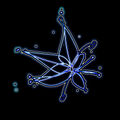Template:Selected anniversaries/May 29: Difference between revisions
Jump to navigation
Jump to search
No edit summary |
No edit summary |
||
| Line 1: | Line 1: | ||
<gallery> | <gallery> | ||
|| *** DONE: Pics *** | |||
||1453: Fall of Constantinople: Ottoman armies under Sultan Mehmed II Fatih capture Constantinople after a 53-day siege, ending the Byzantine Empire. | ||1453: Fall of Constantinople: Ottoman armies under Sultan Mehmed II Fatih capture Constantinople after a 53-day siege, ending the Byzantine Empire. | ||
| Line 24: | Line 26: | ||
||1859: Erich Wasmann born ... entomologist, specializing in ants and termites, and Jesuit priest. He described the phenomenon known as Wasmannian mimicry. Wasmann was a supporter of evolution, although he did not accept the productivity of natural selection, the evolution of humans from other animals, or universal common descent of all life. Pic. | ||1859: Erich Wasmann born ... entomologist, specializing in ants and termites, and Jesuit priest. He described the phenomenon known as Wasmannian mimicry. Wasmann was a supporter of evolution, although he did not accept the productivity of natural selection, the evolution of humans from other animals, or universal common descent of all life. Pic. | ||
||1882: Harry Bateman born ... mathematician. | ||1882: Harry Bateman born ... mathematician. Pic. | ||
||1893: Charles Loewner born ... mathematician. One of his central mathematical contributions is the proof of the Bieberbach conjecture in the first highly nontrivial case of the third coefficient. The technique he introduced, the Loewner differential equation, has had far-reaching implications in geometric function theory. Pic. | ||1893: Charles Loewner born ... mathematician. One of his central mathematical contributions is the proof of the Bieberbach conjecture in the first highly nontrivial case of the third coefficient. The technique he introduced, the Loewner differential equation, has had far-reaching implications in geometric function theory. Pic. | ||
| Line 38: | Line 40: | ||
File:Arthur Stanley Eddington.jpg|link=Albert Einstein (nonfiction)|1919: [[Arthur Eddington (nonfiction)|Arthur Eddington]] and Andrew Claude de la Cherois Crommelin view a solar eclipse as a test of [[Albert Einstein (nonfiction)|Einstein]]'s theory of general relativity. | File:Arthur Stanley Eddington.jpg|link=Albert Einstein (nonfiction)|1919: [[Arthur Eddington (nonfiction)|Arthur Eddington]] and Andrew Claude de la Cherois Crommelin view a solar eclipse as a test of [[Albert Einstein (nonfiction)|Einstein]]'s theory of general relativity. | ||
||1920: John Charles Harsanyi born ... economist. He is best known for his contributions to the study of game theory and its application to economics, specifically for his developing the highly innovative analysis of games of incomplete information, so-called Bayesian games. He also made important contributions to the use of game theory and economic reasoning in political and moral philosophy. | ||1920: John Charles Harsanyi born ... economist. He is best known for his contributions to the study of game theory and its application to economics, specifically for his developing the highly innovative analysis of games of incomplete information, so-called Bayesian games. He also made important contributions to the use of game theory and economic reasoning in political and moral philosophy. Pic. | ||
||1921: Norman Hetherington born ... cartoonist and puppeteer. | ||1921: Norman Hetherington born ... cartoonist and puppeteer. Pic. | ||
||1929: Mathematician Günter Lumer born. He will work in functional analysis. He is the namesake of the Lumer–Phillips theorem on semigroups of operators on Banach spaces, and was the first to study semi-inner-products. Pic. | ||1929: Mathematician Günter Lumer born. He will work in functional analysis. He is the namesake of the Lumer–Phillips theorem on semigroups of operators on Banach spaces, and was the first to study semi-inner-products. Pic. | ||
| Line 54: | Line 56: | ||
||2005: Mathematician Kazimierz Urbanik dies. He founded the journal Probability and Mathematical Statistics and served as rector of the University of Wrocław. Pic. | ||2005: Mathematician Kazimierz Urbanik dies. He founded the journal Probability and Mathematical Statistics and served as rector of the University of Wrocław. Pic. | ||
||2014: Peter Glaser dies ... scientist and engineer. | ||2014: Peter Glaser dies ... scientist and engineer. Pic search yes: https://www.google.com/search?q=peter+glaser | ||
||2014: Walter Jakob Gehring dies ... biologist and academic. Gehring researched ''Drosophila'' genetics and development, particularly the analysis of cell determination in the embryo and transdetermination of imaginal discs. Pic. | ||2014: Walter Jakob Gehring dies ... biologist and academic. Gehring researched ''Drosophila'' genetics and development, particularly the analysis of cell determination in the embryo and transdetermination of imaginal discs. Pic. | ||
Revision as of 11:19, 28 May 2019
1777: Physician and engineer John Mudge elected a Fellow of the Royal Society, and in the same year was awarded the Copley medal for his 'Directions for making the best Composition for the Metals for reflecting Telescopes; together with a Description of the Process for Grinding, Polishing, and giving the great Speculum the true Parabolic Curve'.
1917: Politician John F. Kennedy, 35th President of the United States, born.
1919: Arthur Eddington and Andrew Claude de la Cherois Crommelin view a solar eclipse as a test of Einstein's theory of general relativity.
2016: Chromatographic analysis of Blue Flower reveals "at least eleven, possibly twelve" previously unknown shades of blue.



